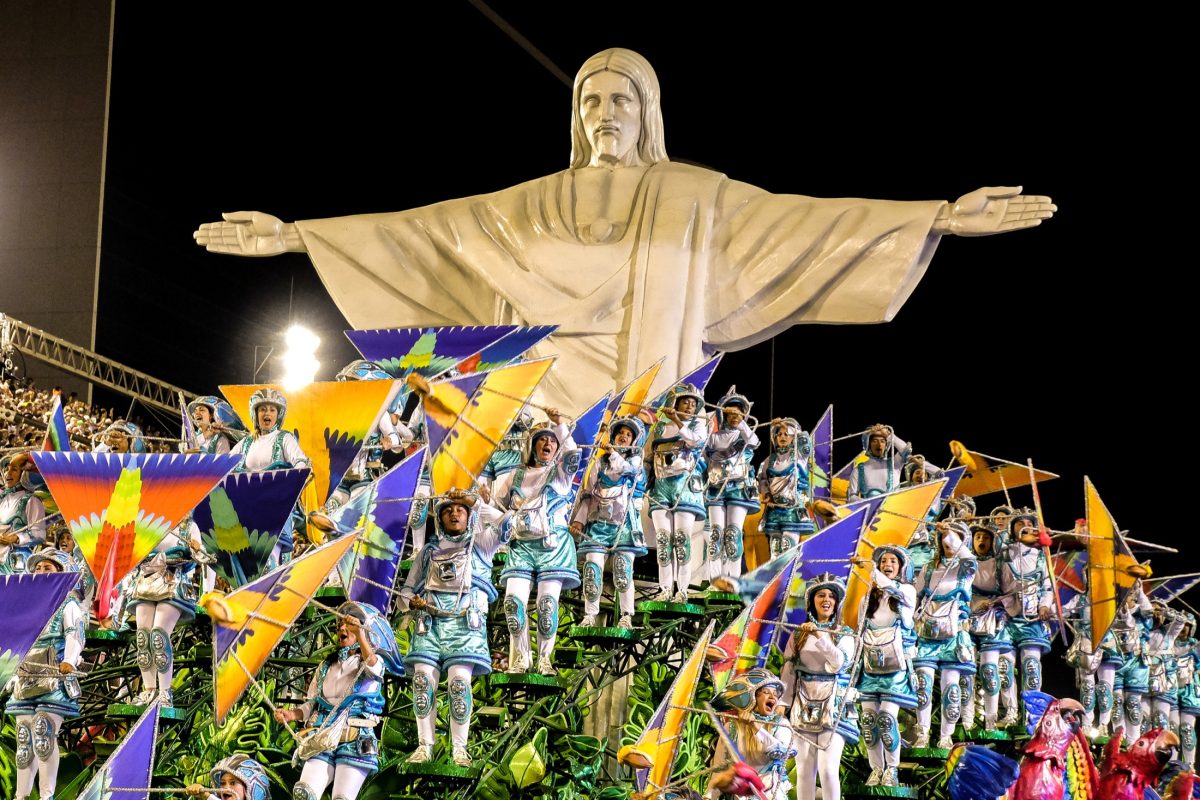Every year, Rio de Janeiro, the cultural heart of Brazil, bursts with color, rhythm, and energy as it hosts the world’s most iconic Carnival. In the midst of its bustling streets, participants adorned in elaborate costumes sway to samba rhythms, while onlookers from across the globe are enchanted by the spectacle.
The Origin Story
Table of Contents
Historically, the Rio Carnival traces its roots back to ancient Roman and Greek festivities. Over time, these traditions blended with African and Portuguese customs, creating the unique Carnival celebration we know today.
The Heartbeat: Samba Schools
Central to the Rio Carnival are the samba schools. Not actually schools, these are community groups dedicated to performing at the Carnival. Each school chooses a theme and choreographs performances, designs costumes, and crafts floats around it.
The Samba Parade
As the sun sets, the Sambadrome – a purpose-built parade area – becomes the epicenter of the Carnival. Samba schools showcase their elaborate floats, captivating costumes, and pulsating music here, competing for the coveted title of Carnival champion.
The Allure of Costumes and Floats
At the heart of Carnival are the jaw-dropping costumes and floats. Every year, designers stretch their imagination to craft works of art, drawing inspiration from history, mythology, and contemporary themes.
Costume Designs
Costumes range from the traditional, like feathered headdresses and beaded outfits, to the avant-garde, reflecting the creativity and diversity of Brazil.
Floats – Moving Masterpieces
The floats, often multi-storied, are a testament to the engineering and artistic genius of the samba schools. Intricately designed and carefully crafted, these moving platforms host dancers, musicians, and other performers.
Street Parties – Where Everyone Joins
Away from the formalities of the Sambadrome, the streets of Rio come alive with block parties, or “blocos”. Casual and spontaneous, these are where attendees can dance freely to the infectious samba beats.
A Detailed Glimpse: Rio Carnival By The Numbers
| Aspect | Detail |
|---|---|
| Duration | 5 days |
| Attendees | Over 2 million per day |
| Samba Schools in Parade | Approx. 70 |
| Major Blocos | Over 500 |
| Costumes Produced | 100,000+ |
| Economic Impact | Estimated $1 billion |
Frequently Asked Questions
When does the Rio Carnival take place?
The Carnival starts on the Friday before Ash Wednesday and concludes on the following Tuesday, marking the beginning of Lent.
Is it safe to attend the Rio Carnival?
Yes, but as with any large event, attendees should remain vigilant. Stick to well-lit areas, avoid flaunting valuables, and always be aware of your surroundings.
Can I participate in the parade or blocos?
Absolutely! While participating with a samba school in the official parade requires months of preparation, anyone can join the blocos or purchase a costume to march with a school.
What other activities can I enjoy during the Carnival?
Beyond the parades and blocos, there are balls, concerts, and themed parties throughout the city. Additionally, many samba schools open their doors to tourists for rehearsals leading up to the big event.
In Conclusion
The Rio Carnival is more than just a celebration; it’s a testament to Brazil’s rich cultural tapestry. Through its vibrant costumes, rhythmic beats, and infectious energy, it unites people from diverse backgrounds in joyous revelry. Whether you’re swaying to samba tunes at a bloco or marveling at the grandeur of the Sambadrome parades, the Rio Carnival offers an unparalleled experience of immersion in Brazil’s heart and soul. It’s a vibrant spectacle that every traveler should witness at least once.

